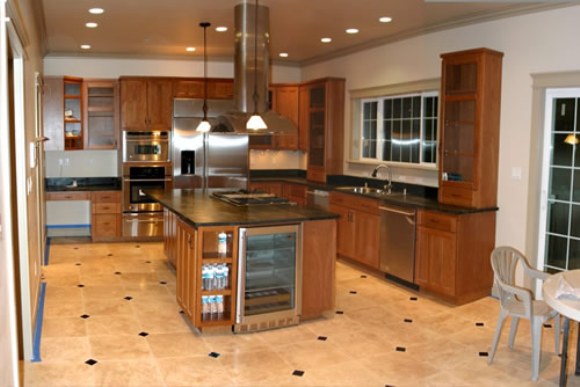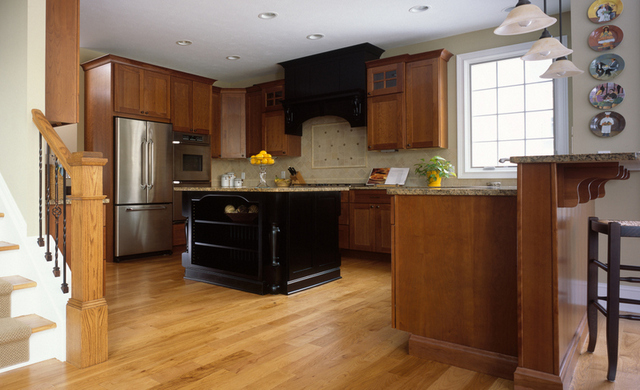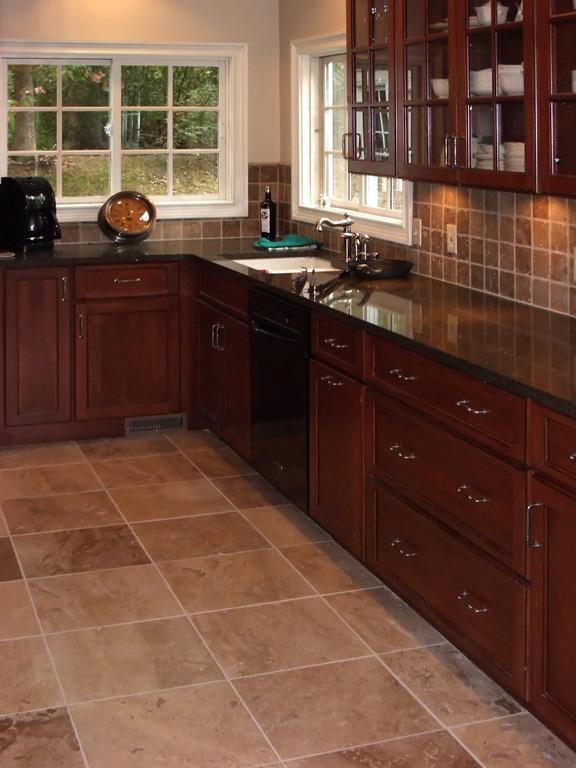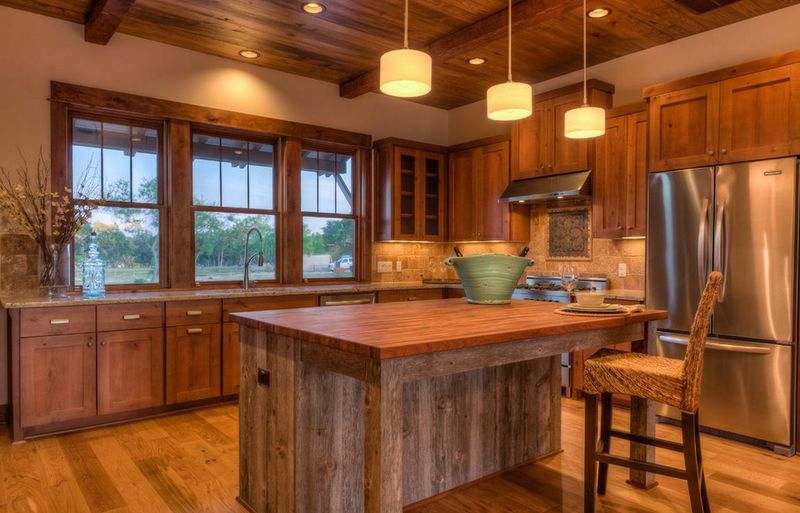Kitchen Flooring Design...
Prepare the ground.....
Kitchen Flooring Design..... The kitchen is a pretty demanding environment for any floor and your kitchen floor takes more of a beating than any other floor in the house.
It is therefor important to prepare the surface well before installing any tiles, wood, vinyl or any of the other modern kitchen flooring materials available these days.
Once you have prepared the surface and done all the prep-work, be sure to visit my kitchen floor design page where you can read all there is to know about modern (and not so modern.....) flooring materials.
Keep in mind that a kitchen overall is not something one does often, and as a kitchen is one of the costliest projects you will undertake, please remember to make absolutely certain that all the groundwork regarding planning and budget is done in detail.
Before we get to the nitty-gritty of choosing the perfect material that will bring your genius to the fore in this kitchen flooring design project, it is important to keep the following in mind when planning your new kitchen floor:
Prepare the surface.....
Before you lay down any new flooring, whether it be ceramic tiles, hard wood, or laminats, you must make sure that the floor is level, dry and stable.
If you are going to lay the new flooring on top of your existing floor, then you can top the existing floor with a layer of hardboard or plywood for a more stable surface.
A pitted concrete floor can be evened with leveling compound, but get advice from a professional floor fitter if you are unsure about the process.

Keep out the damp.....
In modern buildings most concrete floors at ground level are laid as standard with a damp-proof membrane (DPM).
If you live in an older home, this may not be the case though.
A damp-proof course (DPC) is a polyethylene barrier used in a masonry wall with the purpose to resist moisture from rising through the structure by capillary action.
A damp-proof membrane (DPM) is the polyethylene sheeting laid under a concrete slab to prevent the concrete from gaining moisture through capillary action. A DPM may also be used right through in stead of a DPC.
I suggest you consult with a professional on how to proceed to damp-proof your new kitchen floor design, but before you do that, read this article to enhance your knowledge on integral damp-proofing, damp rising, capillary action, etc.etc.

Cable access for modern conveniences.....
With the smart appliances that are already available, as well as with new technology that gets released faster than you can say "rat-race", it will be advisable to plan in sufficient, and even add additional conduit underneath the kitchen floor for cable access to the microwave, fridge, freezer and even the stove.
Soon your fridge will order groceries automatically as stock starts to run low. Although I think that WiFi will most probably be the communications standard of choice for companies like Samsung, LG and others, I have my personal reservations and yes, you may say it, old-timer doubts about the viability of widespread WiFi communications.
The networks get extremely congested and with the critical spectrum of mobile broadband spectrum limitations, especially here in South Africa and other developing nations, I advise to keep your options open and also plan for hard wiring your appliances to the modem for ADSL (wired) access. The speeds of these networks still outperform mobile applications.
So make provision for sufficient conduit runs beneath the floor and keep a wiring plan for future maintenance and access to the correct cabling for each application.
Consider the cost of this kitchen flooring design.....
Now before you can really start to shop around for that perfect kitchen flooring design surface, (whether it be ceramic tiles, terracotta or hard wood) that will suit your kitchen style and will say "This is it!", you have to consider the cost and determine your budget!
Wood may sound fairly inexpensive, but fitting it professionally can be costly and wood also requires maintenance in the future which you must take into consideration now already.
Just so may imported Italian tiles seem exorbitant when you buy them initially, but they have no maintenance and Italian tiles will always be a classic and the value they will add to your home may be worth the cost.
Like all things DIY when it comes to your home, it will be a trade-off between cost, quality and effort.
Choose wisely!
Return from Kitchen Flooring Design to Do It Yourself Kitchens



New! Comments
Have your say about what you just read here! Please leave me a comment in the box below.